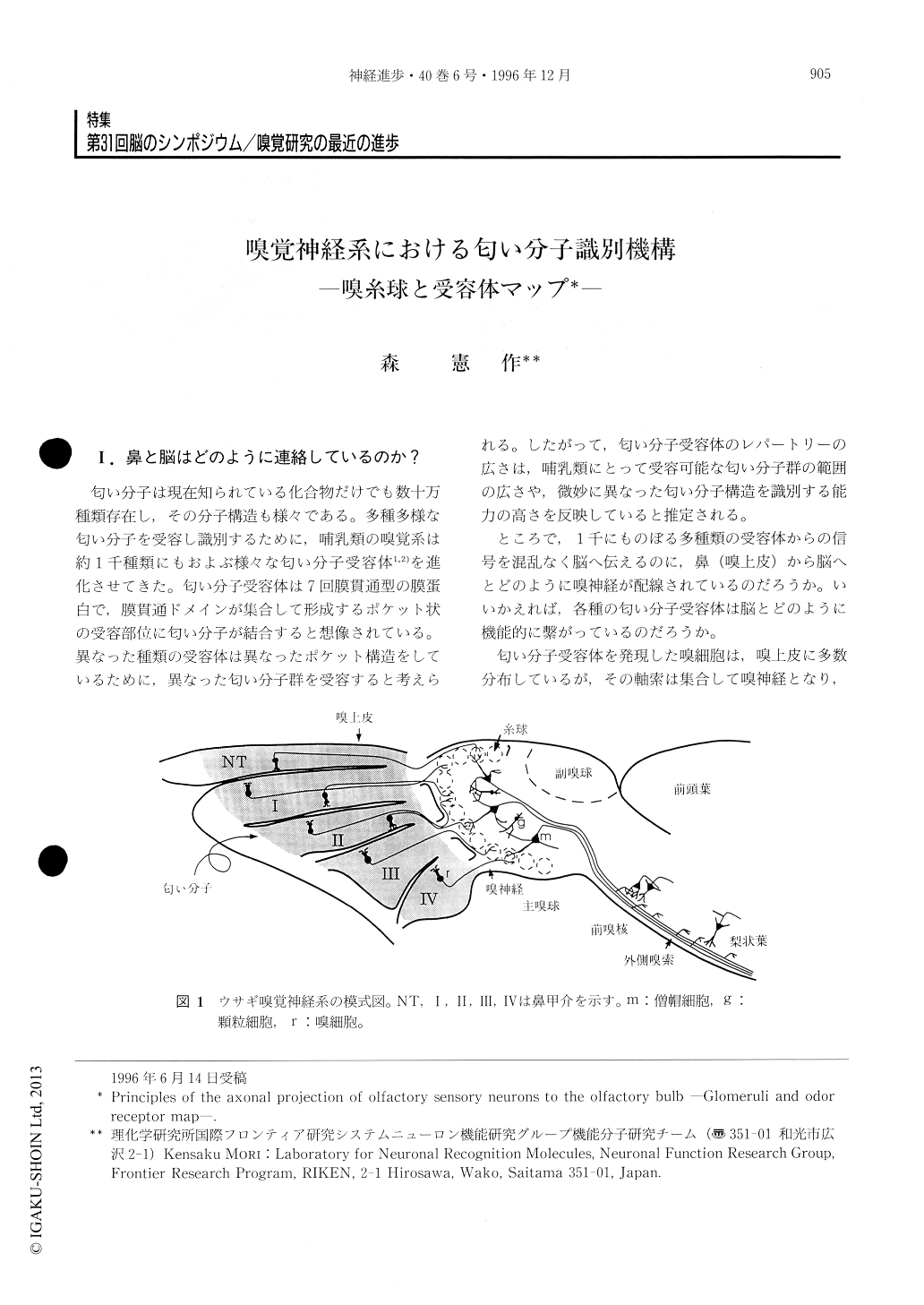Japanese
English
- 有料閲覧
- Abstract 文献概要
- 1ページ目 Look Inside
I.鼻と脳はどのように連絡しているのか?
匂い分子は現在知られている化合物だけでも数十万種類存在し,その分子構造も様々である。多種多様な匂い分子を受容し識別するために,哺乳類の嗅覚系は約1千種類にもおよぶ様々な匂い分子受容体1,2)を進化させてきた。匂い分子受容体は7回膜貫通型の膜蛋白で,膜貫通ドメインが集合して形成するポケット状の受容部位に匂い分子が結合すると想像されている。異なった種類の受容体は異なったポケット構造をしているために,異なった匂い分子群を受容すると考えられる。したがって,匂い分子受容体のレパートリーの広さは,哺乳類にとって受容可能な匂い分子群の範囲の広さや,微妙に異なった匂い分子構造を識別する能力の高さを反映していると推定される。
ところで,1千にものぼる多種類の受容体からの信号を混乱なく脳へ伝えるのに,鼻(嗅上皮)から脳へとどのように嗅神経が配線されているのだろうか。いいかえれば,各種の匂い分子受容体は脳とどのように機能的に繋がっているのだろうか。
This review summarizes recent progress of the knowledge of olfactory axon projection to the glomeruli of the main olfactory bulb in mammals. The olfactory epithelium-main bulb connection includes following two principles ; (1) olfactory sensory neurons expressing the same type of odor receptor converge their axons onto a few glomeruli (glomerular convergence), and (2) olfactory sensory neurons in a receptor expressing zone of the epithelium project their axons to a corresponding zone of the main olfactory bulb (zone-to-zone projection).

Copyright © 1996, Igaku-Shoin Ltd. All rights reserved.


